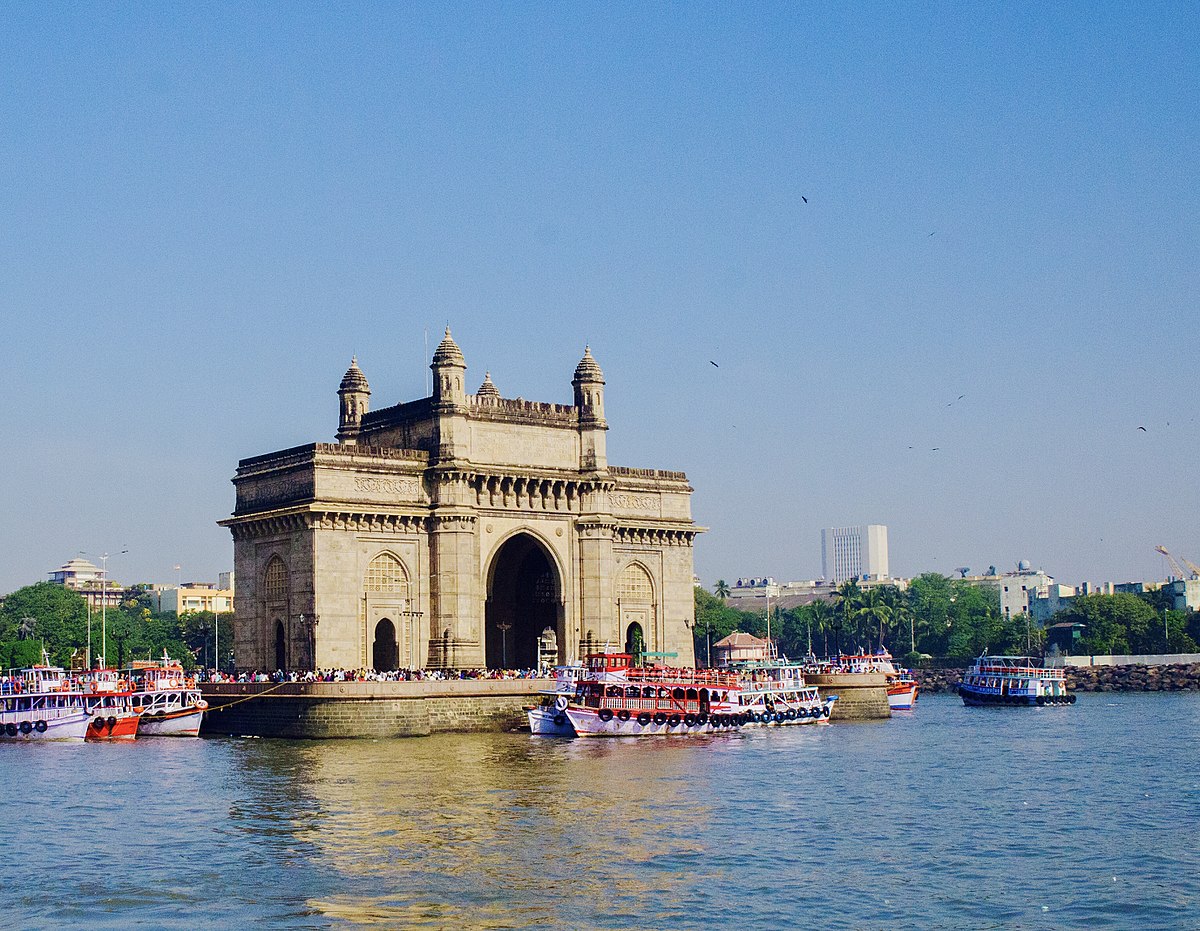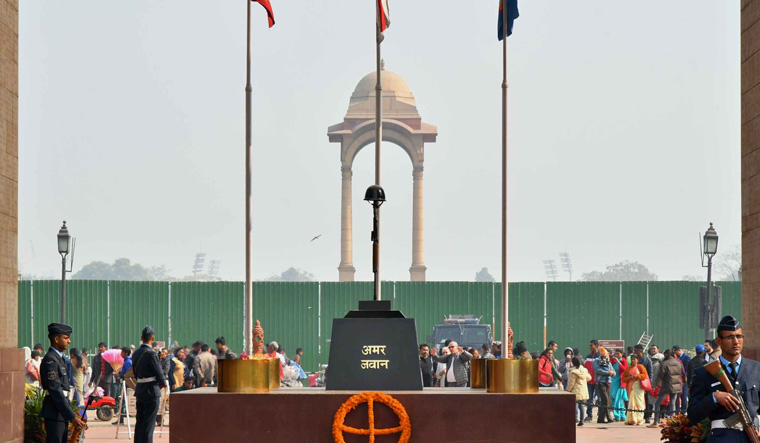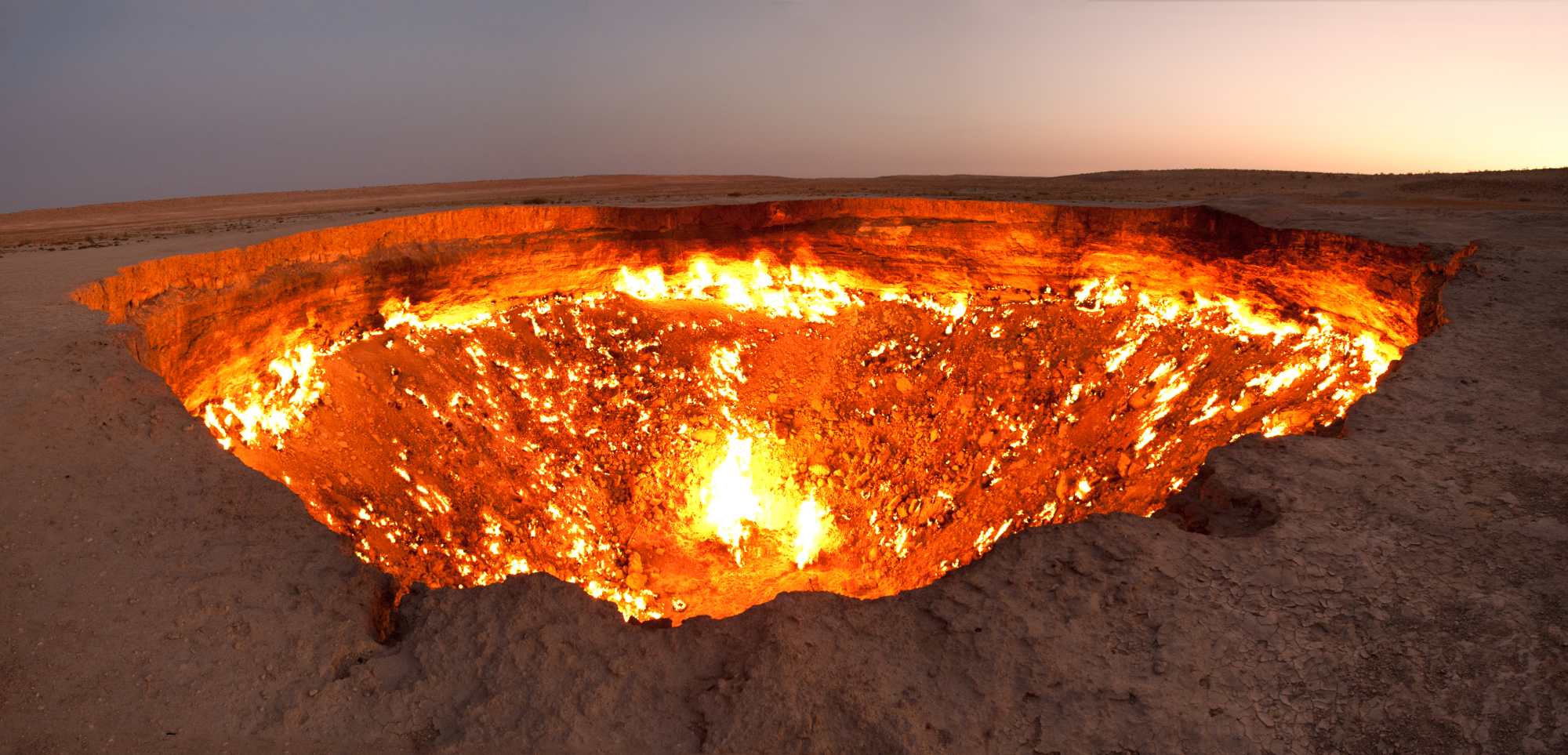TOP 10 ANCIENT MONUMENTS IN INDIA
TOP 10 ANCIENT MONUMENTS IN INDIA
10.QUTUB MINAR

Qutab Minar is a soaring, 73 m-high tower of victory, built in 1193 by Qutab-ud-din Aibak immediately after the defeat of Delhi's last Hindu kingdom. The tower has five distinct storeys, each marked by a projecting balcony and tapers from a 15 m diameter at the base to just 2.5 m at the top. The first three storeys are made of red sandstone; the fourth and fifth storeys are of marble and sandstone. At the foot of the tower is the Quwwat-ul-Islam Mosque, the first mosque to be built in India. An inscription over its eastern gate provocatively informs that it was built with material obtained from demolishing '27 Hindu temples'. A 7 m-high iron pillar stands in the courtyard of the mosque. It is said that if you can encircle it with your hands while standing with your back to it your wish will be fulfilled.
9.CHARMINAR




The Taj Mahal is considered to be the greatest architectural achievement in the whole range of Indo-Islamic architecture. Its recognised architectonic beauty has a rhythmic combination of solids and voids, concave and convex and light shadow; such as arches and domes further increases the aesthetic aspect. The colour combination of lush green scape reddish pathway and blue sky over it show cases the monument in ever changing tints and moods. The relief work in marble and inlay with precious and semi precious stones make it a monument apart.
5.FATEHPUR SIKRI
Fatehpur Sikri is a town in the Agra District of Uttar Pradesh, India. The city itself was founded as the capital of Mughal Empire in 1571 by Emperor Akbar, serving this role from 1571 to 1585, when Akbar abandoned it due to a campaign in Punjab and was later completely abandoned in 1610.
Konark Sun Temple is a 13th-century CE sun temple at Konark about 35 kilometres (22 mi) northeast from Puri on the coastline of Odisha, India.The temple is attributed to king Narasimha deva I of the Eastern Ganga Dynasty about 1250 CE.
The Konark Sun Temple is located in an eponymous village about 35 kilometres (22 mi) northeast of Puri and 60 kilometres (37 mi) southeast of Bhubaneswar on the Bay of Bengal coastline in the Indian state of Odisha. The nearest airport is Bhubaneswar airport (IATA: BBI). Both Puri and Bhubaneswar are major railway hubs connected by Indian Railways' Southeastern services.
3.INDIA GATE
The India Gate (originally the All India War Memorial) is a war memorial located astride the Rajpath, on the eastern edge of the "ceremonial axis" of New Delhi, formerly called Kingsway. It stands as a memorial to 70,000 soldiers of the British Indian Army who died in between 1914–1921 in the First World War, in France, Flanders, Mesopotamia, Persia, East Africa, Gallipoli and elsewhere in the Near and the Far East, and the Second Anglo-Afghan War. 13,300 servicemen's names, including some soldiers and officers from the United Kingdom, are inscribed on the gate. Designed by Sir Edwin Lutyens, the gate evokes the architectural style of the triumphal arch such as the Arch of Constantine, in Rome, and is often compared to the Arc de Triomphe in Paris, and the Gateway of India in Mumbai.
The Victoria Memorial is a large marble building in Kolkata, West Bengal, India, which was built between 1906 and 1921. It is dedicated to the memory of Queen Victoria (1819–1901) and is now a museum and tourist destination under the auspices of the Ministry of Culture. The memorial lies on the Maidan (grounds) by the bank of the Hooghly River, near Jawaharlal Nehru Road (better known as Chowringhee Road).

Amar Jawan Jyoti (Hindi: अमर जवान ज्योति) (English translation: Flame of the immortal soldier) is an Indian memorial constructed after the Indo-Pakistani War of 1971 to commemorate the martyred and unknown soldiers of the Indian Armed Forces who died during the war. The memorial was constructed in December 1971 and inaugurated by Indira Gandhi in 1972. Amar Jawan Jyoti is located under India Gate at Rajpath in New Delhi and consists of a marble pedestal on which a cenotaph is situated. "Amar Jawan" (Immortal Soldier) is scripted in gold on all four sides of the cenotaph and on top, a L1A1 self-loading rifle stands on its barrel with a helmet of the Unknown Soldier on top. The pedestal is bound by four urns, one of which holds a continuously burning flame.
Also more blogs :
TOP 20 WORLD HERITAGE SITES
TOP 10 MOST POWERFUL AIRFORCE
10.QUTUB MINAR

Qutab Minar is a soaring, 73 m-high tower of victory, built in 1193 by Qutab-ud-din Aibak immediately after the defeat of Delhi's last Hindu kingdom. The tower has five distinct storeys, each marked by a projecting balcony and tapers from a 15 m diameter at the base to just 2.5 m at the top. The first three storeys are made of red sandstone; the fourth and fifth storeys are of marble and sandstone. At the foot of the tower is the Quwwat-ul-Islam Mosque, the first mosque to be built in India. An inscription over its eastern gate provocatively informs that it was built with material obtained from demolishing '27 Hindu temples'. A 7 m-high iron pillar stands in the courtyard of the mosque. It is said that if you can encircle it with your hands while standing with your back to it your wish will be fulfilled.
9.CHARMINAR

The Charminar ("Four Minarets"), constructed in 1591, is a monument and mosque located in Hyderabad, Telangana, India. The landmark has become a global icon of Hyderabad, listed among the most recognized structures of India. Charminar has been a historical place with mosque on the top floor for over 400 years and also known for its surrounding markets. It is one of the tourist attractions in Hyderabad. It is where many local festivals are celebrated, such as Ramzaan.
The Charminar is situated on the east bank of Musi river. To the west lies the Laad Bazaar, and to the southwest lies the richly ornamented granite Makkah Masjid. It is listed as an archaeological and architectural treasure on the official "List of Monuments" prepared by the Archaeological Survey of India. The English name is a translation and combination of the Urdu words Chār and Minaror meenar, translating to "Four Pillars"; the eponymous towers are ornate minarets attached and supported by four grand arches.
8.GATEWAY OF INDIA

The Gateway of India is an arch monument built during the 20th century in Bombay, India. The monument was erected to commemorate the landing of King George V and Queen Mary at Apollo Bunder on their visit to India in 1911.
Built in Indo-Saracenic style, the foundation stone for the Gateway of India was laid on 31 March 1911. The structure is an arch made of basalt, 26 metres (85 feet) high. The final design of George Wittet was sanctioned in 1914 and the construction of the monument was completed in 1924. The Gateway was later used as a symbolic ceremonial entrance to India for Viceroys and the new Governors of Bombay. It served to allow entry and access to India.
The Gateway of India is located on the waterfront at Apollo Bunder area at the end of Chatrapathi Shivaji Marg in South Mumbai and overlooks the Arabian Sea. The monument has also been referred to as the Taj Mahal of Mumbai, and is the city's top tourist attraction.
7.AJANTA CAVES
7.AJANTA CAVES

The Ajanta Caves are 30 (approximately) rock-cut Buddhist cave monuments which date from the 2nd century BCE to about 480 CE in Aurangabad district of Maharashtra state of India. The caves include paintings and rock-cut sculptures described as among the finest surviving examples of ancient Indian art, particularly expressive paintings that present emotion through gesture, pose and form.
According to UNESCO, these are masterpieces of Buddhist religious art that influenced the Indian art that followed. The caves were built in two phases, the first phase starting around the 2nd century BCE, while the second phase was built around 400–650 CE, according to older accounts, or in a brief period of 460–480 CE according to later scholarship. The site is a protected monument in the care of the Archaeological Survey of India, and since 1983, the Ajanta Caves have been a UNESCO World Heritage Site.
6.TAJ MAHAL
6.TAJ MAHAL

The Taj Mahal is considered to be the greatest architectural achievement in the whole range of Indo-Islamic architecture. Its recognised architectonic beauty has a rhythmic combination of solids and voids, concave and convex and light shadow; such as arches and domes further increases the aesthetic aspect. The colour combination of lush green scape reddish pathway and blue sky over it show cases the monument in ever changing tints and moods. The relief work in marble and inlay with precious and semi precious stones make it a monument apart.
5.FATEHPUR SIKRI
Fatehpur Sikri is a town in the Agra District of Uttar Pradesh, India. The city itself was founded as the capital of Mughal Empire in 1571 by Emperor Akbar, serving this role from 1571 to 1585, when Akbar abandoned it due to a campaign in Punjab and was later completely abandoned in 1610.
4.KONARK SUN TEMPLE
Konark Sun Temple is a 13th-century CE sun temple at Konark about 35 kilometres (22 mi) northeast from Puri on the coastline of Odisha, India.The temple is attributed to king Narasimha deva I of the Eastern Ganga Dynasty about 1250 CE.
The Konark Sun Temple is located in an eponymous village about 35 kilometres (22 mi) northeast of Puri and 60 kilometres (37 mi) southeast of Bhubaneswar on the Bay of Bengal coastline in the Indian state of Odisha. The nearest airport is Bhubaneswar airport (IATA: BBI). Both Puri and Bhubaneswar are major railway hubs connected by Indian Railways' Southeastern services.
3.INDIA GATE
2.VICTORIA MEMORIAL
The Victoria Memorial is a large marble building in Kolkata, West Bengal, India, which was built between 1906 and 1921. It is dedicated to the memory of Queen Victoria (1819–1901) and is now a museum and tourist destination under the auspices of the Ministry of Culture. The memorial lies on the Maidan (grounds) by the bank of the Hooghly River, near Jawaharlal Nehru Road (better known as Chowringhee Road).
1.AMAR JAWAN JYOTI

Amar Jawan Jyoti (Hindi: अमर जवान ज्योति) (English translation: Flame of the immortal soldier) is an Indian memorial constructed after the Indo-Pakistani War of 1971 to commemorate the martyred and unknown soldiers of the Indian Armed Forces who died during the war. The memorial was constructed in December 1971 and inaugurated by Indira Gandhi in 1972. Amar Jawan Jyoti is located under India Gate at Rajpath in New Delhi and consists of a marble pedestal on which a cenotaph is situated. "Amar Jawan" (Immortal Soldier) is scripted in gold on all four sides of the cenotaph and on top, a L1A1 self-loading rifle stands on its barrel with a helmet of the Unknown Soldier on top. The pedestal is bound by four urns, one of which holds a continuously burning flame.
Also more blogs :
TOP 20 WORLD HERITAGE SITES
TOP 10 MOST POWERFUL AIRFORCE





Comments
Post a Comment